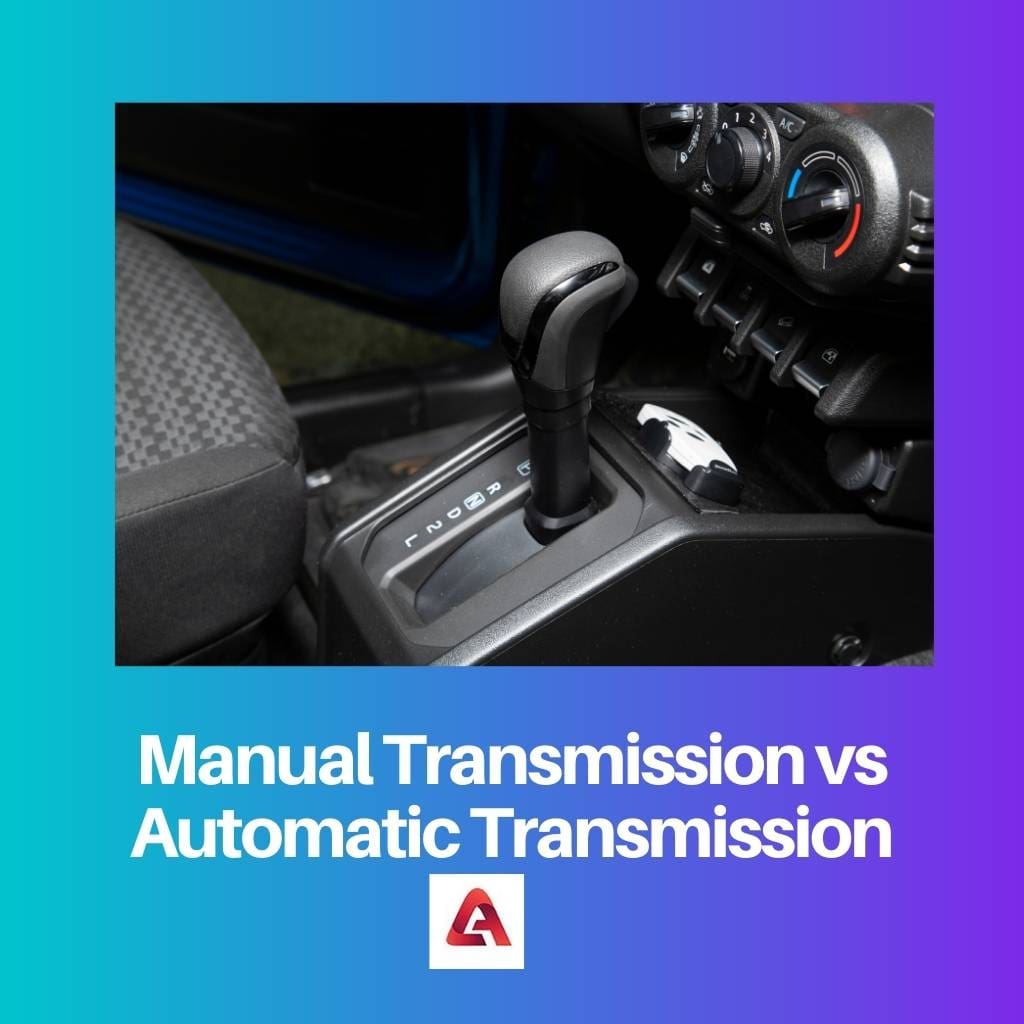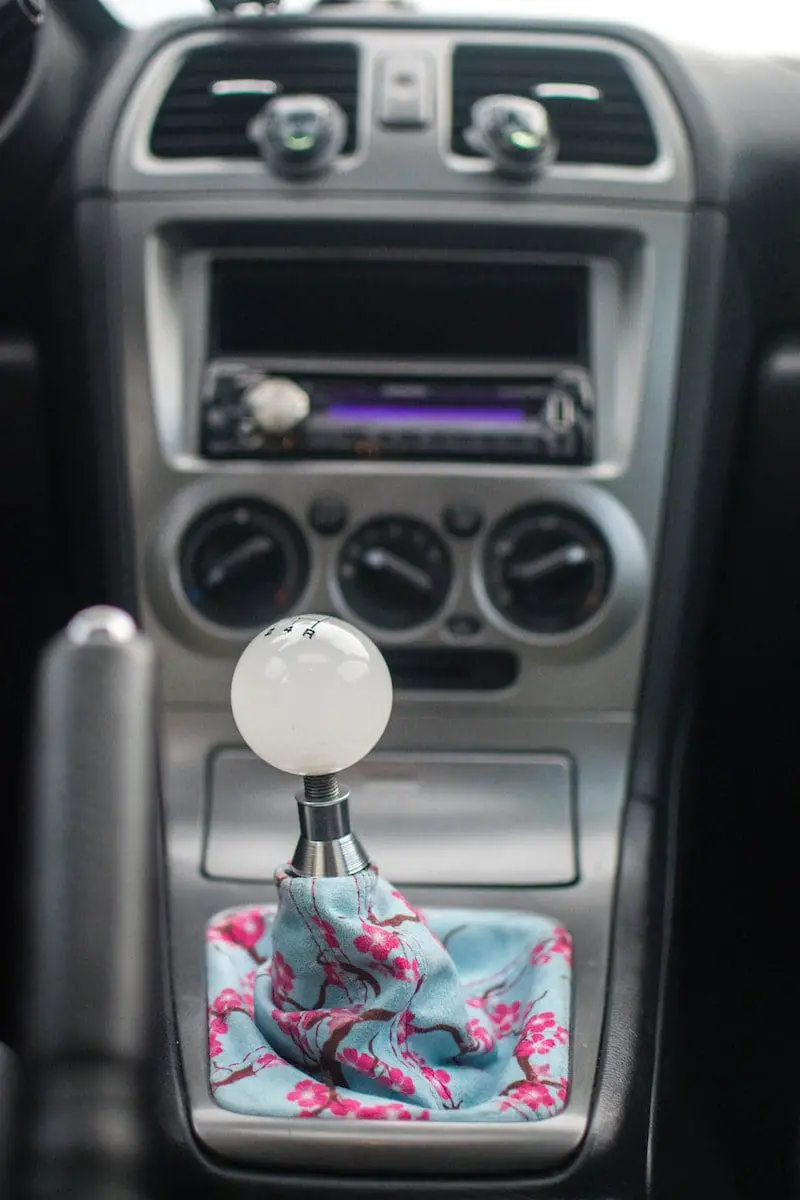The transmission is one of the most important components of an automobile. It is through the transmission that the power generated by the engine can be transferred to the wheels and make the car move.
Without the transmission, there is no way of running the vehicle.
Key Takeaways
- Manual transmission requires the driver to shift gears using a clutch pedal and gear stick, while automatic transmission shifts gears automatically without driver intervention.
- Manual transmission offers greater control over the vehicle, enabling drivers to choose the most suitable gear for the situation.
- The automatic transmission provides a more convenient and smoother driving experience, especially in heavy traffic or steep inclines.
Manual Transmission vs Automatic Transmission
The difference between Manual Transmission and Automatic Transmission is that in a manual system, a clutch plate is used to engage and disengage the gears while selecting the gears. Whereas in an automatic system, the gears are selected automatically by the torque converter, and this depends on the speed of the vehicle.

Manual transmission is the most common type of transmission. In this transmission, there is a clutch pedal and a gear shifter.
The driver engages the clutch by pressing the pedal and then uses the gear shifter stick to manually change the gear to power the transmission.
The appropriate gear is selected from the set of gears, depending on the power output of the engine.
In an automatic transmission system, there is no clutch, and hence no clutch pedal. Instead, the gear is changed using a torque converter, which does not require manual assistance.
Most SUVs, trucks, and even sedans, and other everyday vehicles now opt for using automatic transmission systems over the traditional manual system.
Comparison Table
| Parameter | Manual Transmission | Automatic Transmission |
|---|---|---|
| Clutch Pedal | A clutch pedal is used to engage the clutch for changing gear | No clutch pedal since gear is changed automatically using a torque converter |
| Gear Change | Gear has to be changed at the right time to match the RPM of the engine | Gear changed automatically at the correct time |
| Fuel Economy | Good fuel economy | Fuel economy slightly lower than manual transmission vehicles |
| Risk of Stalling | The vehicle may stall if gears are not engaged properly | There is no risk of stalling as the gear is changed manually |
| Maintenance | Easy to repair and easier to maintain due to less complicated system | Maintenance is difficult and may get damaged easily if not maintained properly and frequently. |
What is Manual Transmission?
Manual transmission is the most common transmission system used in automobiles. Most commercial and personal vehicles employ this system.
In a manual transmission system, there is a set of gears on the countershaft and the output shaft. Both shafts interact with each other via this system of gears.
The gears on the countershaft are fixed and hence cannot spin freely. Rather, these gears spin with the shaft itself.
The gears on the output shaft, on the other hand, are not fixed to the shaft, and thus this allows the gears to spin freely, without turning the shaft. These gears are paired to the gears on the countershaft which creates the different gear ratios.
These gear ratios are what we commonly call the first gear, second gear, and so on.
The gear shifter stick is used for engaging these different gears and creating the pairs.
The gear shifter locks the gears on the output shaft with the gears on the countershaft so that the output shaft can spin with the same RPM as the countershaft.
As the output shaft is connected to the differential, the output shaft sends the torque to the wheels and hence the vehicle can move.

What is Automatic Transmission?
Automatic transmission is mostly used in SUVs, Tucks, and other performance-oriented automobiles, although lately, many economy cars, sedans, and hatchbacks have also been offered with an automatic transmission system.
As the name suggests, in an Automatic transmission arrangement, the gears are changed automatically without assistance from the driver.
This eliminates the need for a clutch pedal, as there is no need to engage the clutch manually.
Most common automatic transmission systems use a torque converter to change the gears.
The torque converter is a very complicated assembly of different parts. It consists of a torque converter pump, turbine, and stator, all encased in a metal housing, with bearings between each part for smooth operation.
A fluid called transmission fluid is present in the torque converter and is maintained under pressure. The power from the engine is transferred to the pump of the torque converter.
The pump uses the pressurized transmission fluid to engage the turbine of the torque converter.
Because of this, the turbine begins to rotate and the rotation of the turbine depends on the pressure power of the transmission fluid.
The turbine is connected to the central shaft which is used to transmit the power to the planetary gear system.

Main Differences Between Manual Transmission and Automatic Transmission
- In a manual transmission system, the gears have to be changed manually by engaging the clutch pad before changing the position of the gear shifter. In an automatic transmission, the gear is selected automatically from the planetary gear assembly using the torque converter.
- Manual transmission is the most common type of transmission and uses a very simple system of gears. A torque converter is a complicated assembly of parts which is used to operate the planetary gear system.
- Maintenance is very important for Automatic transmission, and frequent maintenance is required for smooth operation. Manual transmission is easy to maintain, and the repairmen are also comparatively very easy.
- A planetary gear system is present in Automatic transmission, and the gear changes depending on the speed of the vehicle. The gear has to be changed at the right time for a manual transmission system. This has to be done manually.
- The fuel economy of Manual transmission vehicles is comparatively better than most Automatic transmission vehicles. Hence automatic transmission is mostly used in performance-oriented vehicles.





